Sikhism Day
20 Nov 2019
On Tuesday this week the whole school took part in a special day where we focused on the religion of Sikhism. We began our morning as a whole school in the hall where we watched a short video about being a Sikh. https://youtu.be/qXhV3dMxSzE
We then thought of questions that we wanted to know the answers to during the day. Each teacher had created an activity for us to do, so over the course of the day we looked at four different aspects of Sikhism.
-Sikhism Our Questions.docx-
One of these activities was to explore the life of Guru Nanak, the Guru who is widely considered to be the founder of the Sikh faith. Through some fantastic discussion and group work we focused our thinking around three key questions: What is a Guru? Who was Guru Nanak? Why is he important?
Using an animated film of his life, we explored how Nanak came to be the first Guru, teacher, of the Skih religion. The younger children focused on describing the Guru, considering how kind, generous and selfless he was towards others. The older children extended their thinking by considering the messages from God which Guru Nanak taught others about - exploring themes of equality and peace.
One of the other workshops we did was to learn about the Sikh Festival of Diwali. We started off by talking about what we already knew, we soon realised we didn't know that much. But before long we had learnt lots of information, some of us researched facts about Diwali on the internet and shared them with our class. Others watched a short video and some looked at photographs to learn about Diwali. We learnt that -
- Diwali is the festival of light.
- It is an important festival, which originated in India.
- It celebrates good winning over evil.
- It crosses religious lines as both Hindus and Sikhs celebrate it, but they both have different stories as to why they celebrate the festival.
- Sikhs believe that Diwali is a celebration of when the Guru Har Gobind was released from prison. The King thought that Guru was plotting against him, so he had him put in prison.There were 52 princes in prison with him. After a long time the King said he would only release those holding on to the Guru's cloak so they made a really big cloak and all held on, so the King had to release them all.
- Both religions celebrate Diwali by spending time with their loved ones, lighting candles, hanging lanterns, decorating their homes and towns with bright colours.
There were lots of different tasks for us to do; making Diwali cards, creating or colouring Rangoli patterns, making lanterns, designing our own menhdi/henna hands and decorating Diva lamps.
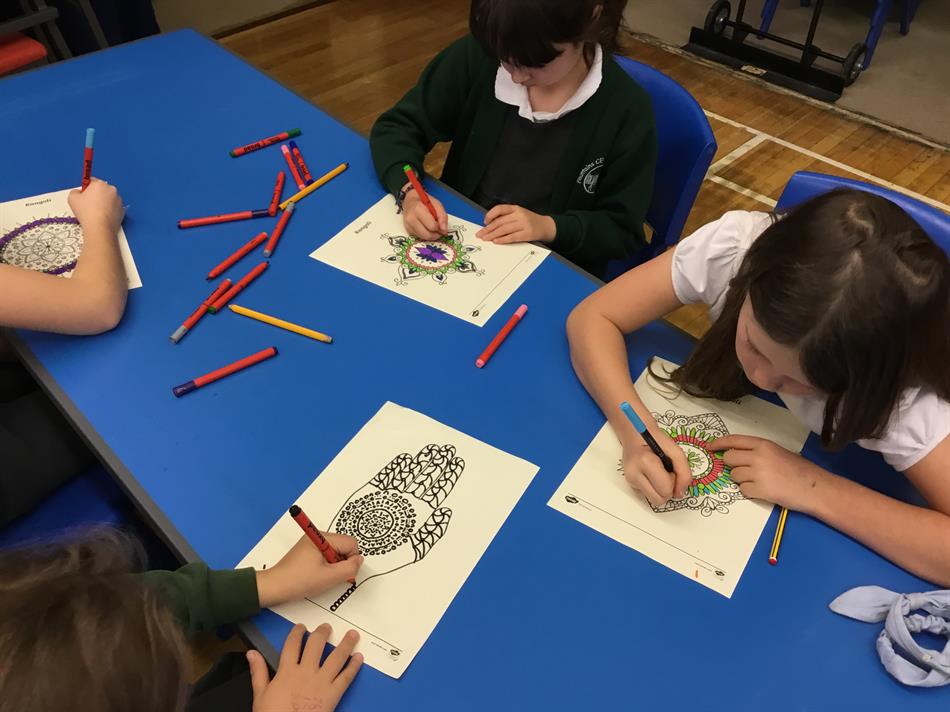
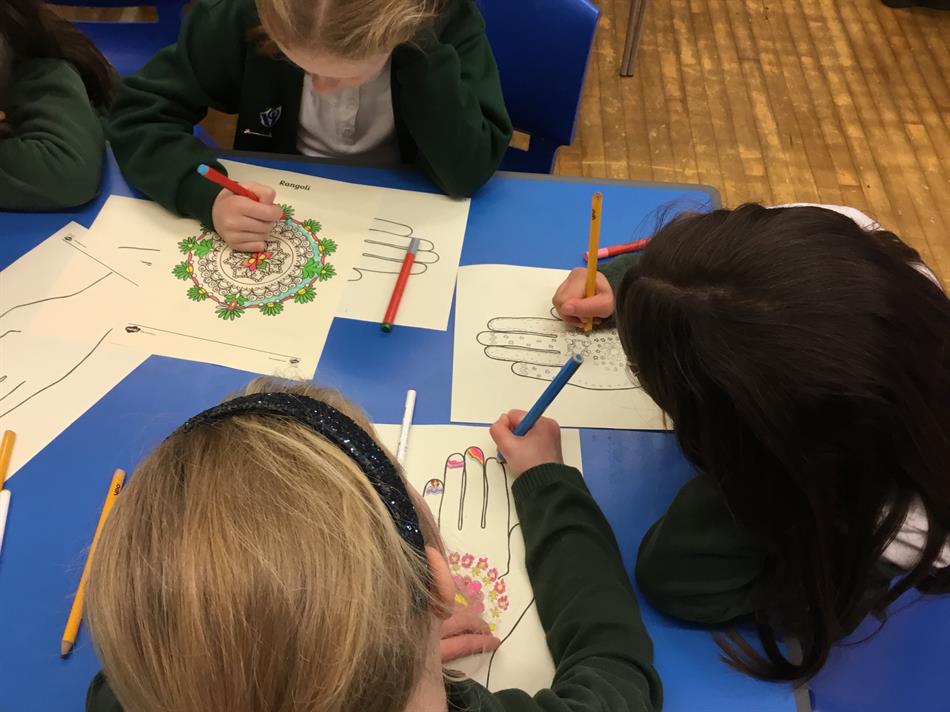
Another of the workshops was based around the set of symbols that Sikhs wear to show their dedication to Sikhism known as the 5 Ks.
We found out that the 5 Ks are called this because the name of each of the symbols (in Punjabi) begins with the letter K. The 5 Ks are: having uncut hair (kesh) which demonstrates their obedience to God; wearing a comb (kangha) which reminds Sikhs that their lives should be clean and ordered in body and mind; wearing a steel bracelet (kara) which reminds Sikhs to behave well and restrain from doing wrong; wearing cotton shorts (kachera) which are a symbol of modesty and purity; and carrying a sword (kirpan) which reminds Sikhs that they must fight a spiritual battle, defending what is right.
We were all able to handle all of the 5 Ks and look at them closely, some of us even dressed up in them.
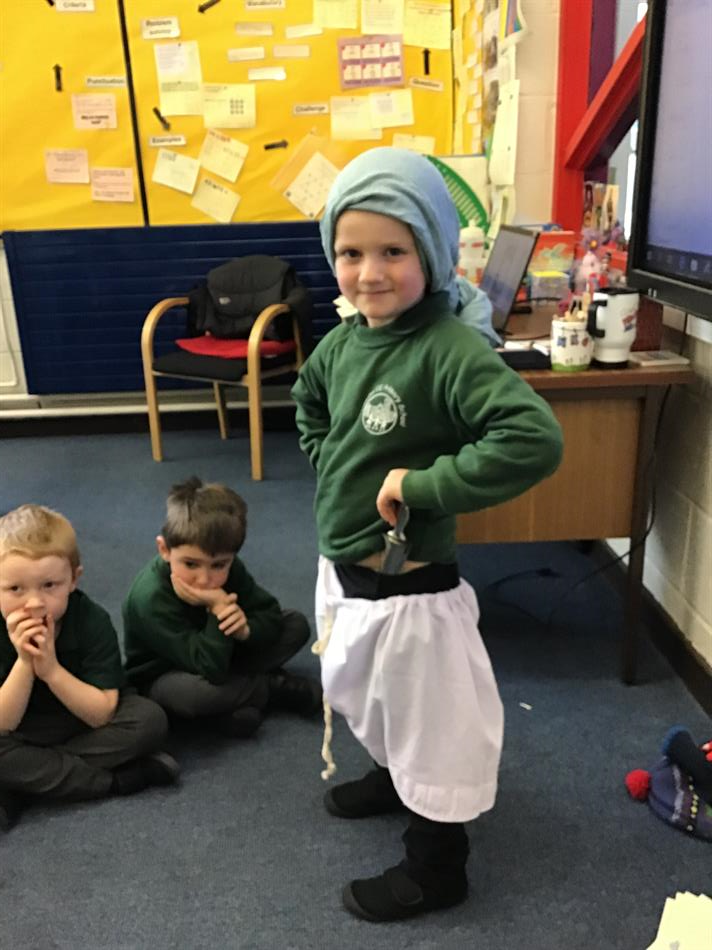

We completed a range of different activities such as sorting games and labelling pictures of Sikhs with the 5 Ks. Some of us reflected on which of the 5 Ks we would be happy to wear every day and why, and others of us thought about designing our own object to wear each day which would reflect our values.

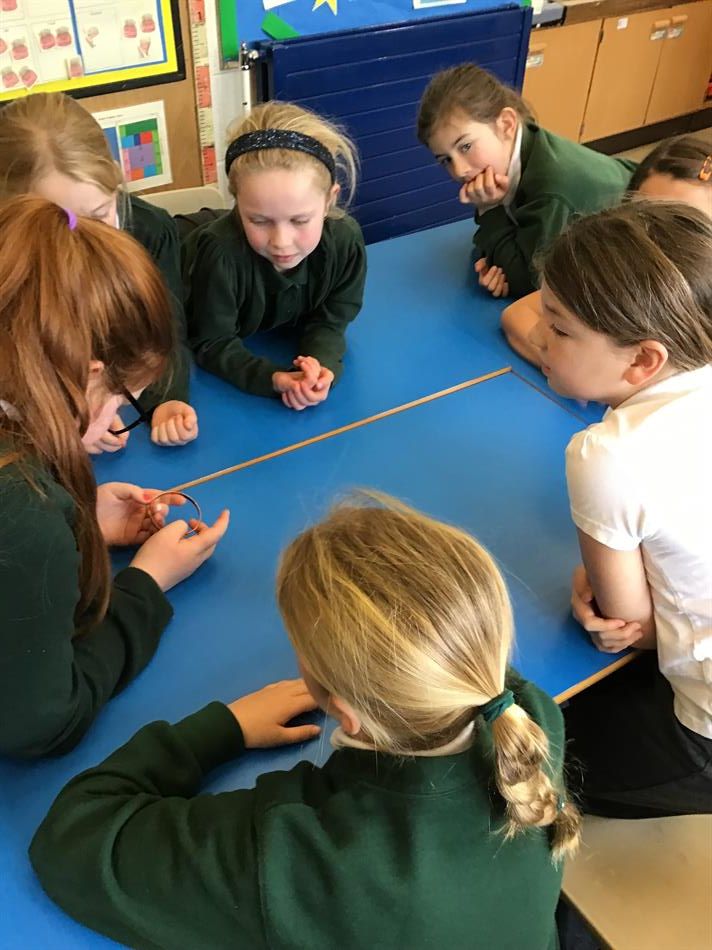
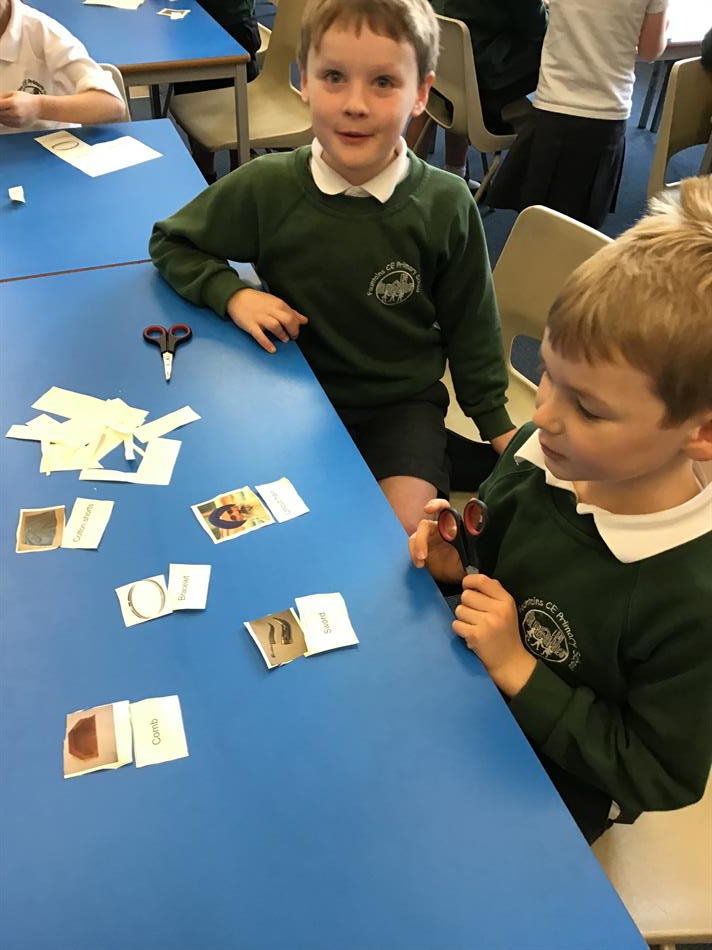
In our 'Langar' workshop, we asked ‘What is the tradition of the langar and why is it important for the Sikh faith?’
- We found out that the langar is a kitchen and eating area in a Gurdwara, where a free meal is served to all visitors.
- Everyone is welcome and no-one is turned away.
- The food is usually served twice a day, every day of the year.
- Guru Nanak created the langar because he believed that everyone is equal and all people should all be treated the same.
- It is an important place in the Sikh faith, where a community act of service called ‘seva’ can be performed, to do something for others. At the Gurdwara, everyone takes turns to prepare, cook and serve the meal, then clear up afterwards.
- The langar is served after prayers.
- Visitors remove their shoes and cover their heads, then sit in rows on the floor, to share and enjoy their meal together.
What food is served in the langar?
We found that the free meal is always vegetarian. Foods such as rice, vegetable curries, chapatis, salads and fruit are served. We looked at some pictures of the different traditional langar meals and saw a film that showed food being prepared and shared in a Gurdwara. We then turned the classroom into a langar. We sat in rows on the floor and shared a meal of lentil and chickpea curry, potatoes with peas, chapatis and salad. We all enjoyed tasting some different food. Some of us went on to design our own langar meal.
We thought about the values that the langar represents. Here are some of our answers:
“Very generous and unselfish,” “The people are kind,” “The langar is caring,” “They are good at sharing,”
“Very respectful,” “Organised and responsible”
We realised that these are also some of our own school values. We reflected on times when we could follow the Sikh example by sharing and showing generosity and respect to others.




In the hall there is a super display showcasing our learning, please come in and see!